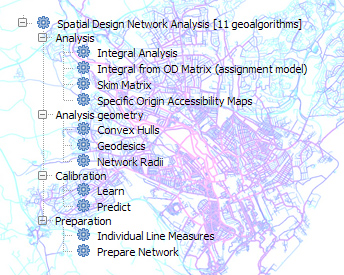
We are pleased to announce that sDNA version 3.4.5 is considered stable!
While sDNA remains very general purpose software, sDNA3 also includes the latest active travel models from our ongoing research projects.
Finally, we have incorporated feedback from our external partners to make the workflow more efficient in day-to-day use.
Enhanced compatibility
- Use Open Source GIS with QGIS Support
- Increased compatibility with network formats (ability to run link-weighted analysis without fixing split links; grade separation and elevation can now be used together)
- Link to other models: export skim matrices from sDNA or use sDNA to assign an external Origin-Destination matrix (sDNA+)
- Easier to install anywhere with offline unlocking and no administrator account required
Enhanced ease of use
- Links can be switched on and off for scenario analysis (sDNA+)
- Do your stats within sDNA, no need for external tools
- Preserve text and numeric data in sDNA Prepare (sDNA+)
- Improved interface to all functions in sDNA, more helpful error messages and it’s less of a CPU hog
- Full user manual – not just for sDNA but guiding you through the theory of spatial network analysis and how to prepare networks
Enhanced analysis
- Produce maps of who uses a selected link (sDNA+)
- Easy to use cycle, vehicle, pedestrian and public transport metrics (sDNA+)
- More realistic behavioural models with hybrid and banded radius, enhanced hybrid metrics for turns (sDNA+)
- Robust multivariate learn and predict tools based on generalized cross-validation
- Geometry outputs are now fully 3d (sDNA+)
- OD Matrix Input and Skim Matrix Output (sDNA+)
Users wishing to use sDNA3 can find it on the downloads page. For enhanced features, see the sDNA+ page.
Part of the sDNA3 development was funded under the ESRC Impact Accelerator scheme, including contributions from Arup, WSP, Sustrans and Tonji University.
